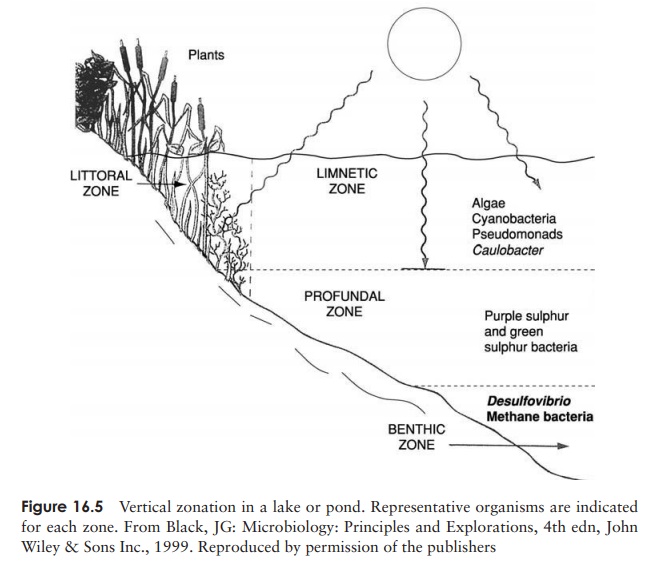Chapter: Essential Microbiology: Microorganisms in the Environment
Microbiology of freshwater
The
microbiology of freshwater
The microbial population of freshwater is strongly
influenced by the presence or absence of oxygen and light. A body of water
such as a pond or lake is stratified into zones (Figure 16.5), each having its
own characteristic microflora, determined by the

availability of these factors. The littoral zone is the region situated
close to land where the water is sufficiently shallow for sunlight to penetrate
to the bottom. The limnetic zone
occupies the same depth, but is in open water, away from the shore. The profun-dal zone occupies deeper water,
where the sun is unable to penetrate, and finally the benthic zone comprises the sediment of mud and organic matter at
the bottom of thepond or lake.
Oxygen is poorly soluble in water (9 mg/l at 20 ◦ C), so its
availability is often a limiting factor in determining the microbial population
of a body of water. Oxygen availability in lakes and ponds is closely linked to
oxygenic photosynthesis and therefore, indirectly, to the penetrability of
light. Phototrophs such as algae and blue-greens are limited to those regions
where light is able to penetrate. Oxygen is absent or very limited in the
benthic zone, where anaerobic forms such as the methanogenic bacteria are to be
found. Another factor influencing microbial populations is the organic content
of the water; if this is high, the growth of decomposers will be encouraged,
which will in turn deplete the oxygen. This is much less of an issue in rivers
and streams, where physical agitation of the water generally ensures its
continued oxygenation.
The temperature of freshwater ecosystems ranges
between extremes (0–90 ◦ C), and
microorganisms may be found throughout this range.
Microorganisms play a central role in the
purification of wastewaters.
Related Topics